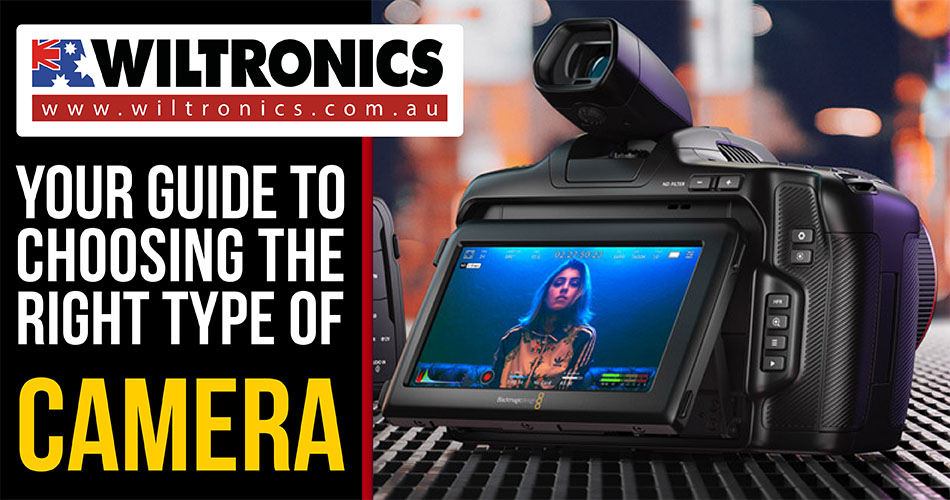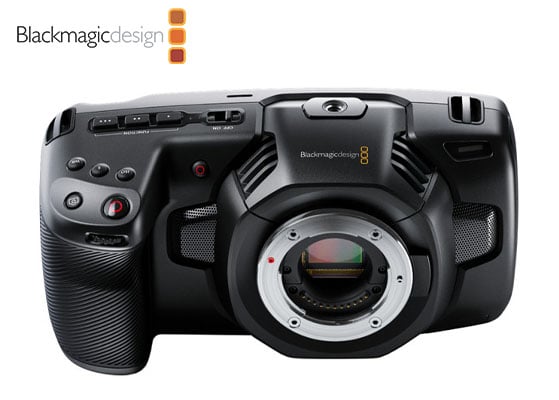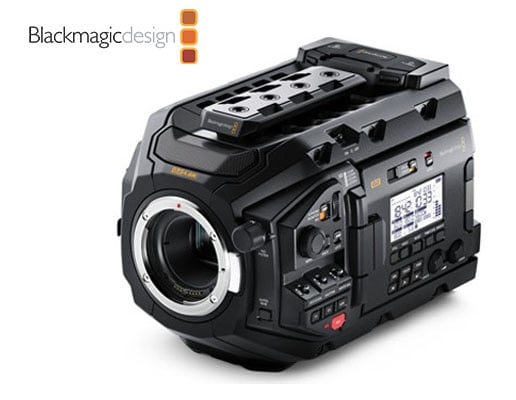Guide to Choosing the Right Type of Camera for You
September 15, 2022

The right type of camera can take your photography skill to the next level.
The digital revolution has significantly benefited the world of photography. For one, photographers have been able to see the fruits of their labour in an instant. Processing of films is no longer necessary.
It all began in 1975 and moving forward, a variety of digital cameras have been introduced. But which one should you choose?
One way to figure it out is to know the categories of cameras (mainly digital) available to you. Below are recommendations for camera types to help you find the best system.
What Type of Camera Should You Get?
More digital cameras are being developed to suit every enthusiast photographer’s artistic needs. There are four main types, but the list does not stop there.
At first, it may be hard to choose the right camera for you. But it is easy to figure out which one will work best once you find out more about each type, including:
- What they are best for
- Their pros and cons
Moreover, the type of camera you go for will depend on several factors. These include what you want to capture or film, the portability, and the image quality you are looking for.
Below are the most common types of cameras available on the market:
1. Compact cameras
This type of camera is a point-and-shoot style, and it is the most user-friendly variety. Point the camera at the subject and click the shutter—and you have a captured moment!
It is easy to use, lightweight enough to carry, and incredibly affordable. Today, there are quite a few different kinds of compact cameras, and these are:
- Standard: A point-and-shoot camera.
- Zoom compacts: Have a better zoom lens installed than standard.
- Advanced compacts: They allow for manual exposure mode and have higher resolution.
Either way, a compact camera is a perfect choice if you want convenience and one that fits a smaller budget. Plus, taking higher resolution snapshots whenever and wherever.
Pros:
- Lightweight and compact
- Simple to use with an LCD screen for composition
- Features automatic shooting modes, ideal for beginners
- It comes with an affordable price tag
Cons:
- Most models lack a viewfinder
- You cannot customise shutter speed and aperture
- Limited aperture and zoom range
- Lower resolution and slower focus
- The buttons can be small and fiddly
With a good artistic eye and a knack for composition, you should have no problem producing photos.
2. Bridge cameras
A bridge camera is somewhere between a compact and DSLR camera. It has more advanced features than you get from a standard compact model. This includes manual controls to change ISO, shutter speed and aperture.
And although it is not quite as advanced as DSLRs, it gives you the same level of control and ergonomics. However, without the option to change the lens, and the autofocus speed tends to be slower, too.
Take advantage of the smaller sensors, though. They make it easier to build lenses that can offer a huge amount of zoom—far more than on a DSLR or mirrorless camera. All the good stuff for a fraction of the price.
Pros:
- Great all-round camera
- Huge zoom range and more manual controls
- With built-in viewfinder
- Superior image quality to most compact cameras
- Budget-friendly compared to ILC and multiple lenses
- A good balance between portability and versatility
Cons:
- Lenses are fixed and not interchangeable
- Usually more expensive than simple point and shoot cameras
- Most are not lightweight and compact
- Slower operational speed than ILC (Interchangeable Lens Camera)
- A single lens may not be ideal for ultra-wide angle or extreme shallow depth of field portrait
Invest in a bridge camera if you want to keep equipment to a minimum. It is your best bet if you have “graduated” from a point-and-shoot but not ready to invest in an ILC system.
3. DSLR cameras
DSLR, a.k.a. digital single lens reflex, cameras take photography to the next level! Popular with beginners and professionals alike for delivering sharp and spectacular images.
On top of that, DSLR cameras have an incredible background bokeh. Videos are in high-resolution thanks to advanced sensors and interchangeable lenses.
The manual camera settings also make a difference. Offering a professional touch, DSLR cameras are the go-to for most creatives.
There are two types of DSLRs:
- Full-frame (35mm): Has a 36x24mm sensor, yields better image quality and low-light capability. It is less expensive than APS-C.
- Crop sensory (APS-C): Covers less of the image projected by the lens due to the smaller sensor.
While they are deemed high-end, there are affordable entry-level alternatives for beginners. They are suitable for almost every kind of photography.
Pros:
- Fully customisable settings
- Large sensors for cleaner images and high-resolution photo output
- Full HD to UHD video output
- Wide range of interchangeable lenses and accessories
- Optical viewfinder
Cons:
- It tends to be bulkier and hard to hold in one hand
- More expensive than other types
- The learning curve can be a bit steep
If you want the best professional-looking photos possible, invest in a DSLR.
4. Mirrorless cameras
This type of camera is the latest in professional photography. It is a lighter and more compact alternative to DSLR.
The body lacks a mirror that reflects light to the sensor; the light goes straight to the sensor. It limits camera shake, and with fewer moving parts, it is quieter than DLSRs.
What is more interesting is that mirrorless cameras can capture incredible, high-resolution images. All without faster shutter speeds! Using one also lets you record ultra HD videos—as most high-end DSLRs can produce.
Overall, a mirrorless camera combines a point-and-shoot and a DSLR. Compact size with simpler controls and has interchangeable lenses and impressive outputs!
Pros:
- It comes with an electronic viewfinder
- In-camera image stabilisation
- Smaller and lighter than a DSLR
- Simpler operation and controls
- Higher video quality even in lower-end models and often better for video recording
- Shoots more images at faster shutter speeds
Cons:
- Shorter battery life
- Slower autofocus
- Fewer choices in lenses and accessories compared with DSLRs
If you travel often and do not want to compromise on quality, a mirrorless camera is your best bet!
5. 360 cameras
Like action cameras, 360 models are water-resistant and mountable on many surfaces. One takes half dome to full-circle panoramic photos and videos using back-to-back lenses.
The two wide-angle lenses face in opposite directions. The footage and photos are combined to give a complete field of view. This allows you to choose your angle during the editing process.
Using one also means you can capture realistic moments with stunning panoramic views. It is a very good camera choice for taking adventure photos.
Pros:
- Small, lightweight, and compact
- Versatile and mountable on almost any surface
- It takes very realistic 360-degree photos and videos
- Allows live view or streaming
- Can connect to a smartphone, allowing for framing shots, downloading and editing footage
Cons:
- Fixed focus
- Sensitive to camera shake and blurring
- Limited digital “pinch” zoom (if available)
- For digital viewing only
Great for travel photography and perfect for reality-style video.
6. Action cameras
Action cameras are great for extreme outdoor adventures. They can fit in the palm of your hand, but they’re highly durable, both weather and shockproof.
Never underestimate their size because you can get some incredible and high-resolution shots! The angle of view is wide, and everything within the frame will be sharp by default—there is no need to focus.
Moreover, exposure is also automated; colours are bright and saturated by default. Plus, at the very least, you can inter-splice them with other footage from a DSLR or mirrorless camera. But note that this depends on the project you are trying to achieve.
And the best part is that an action camera enables hands-free shooting. This opens up a whole new world of digital photographic possibilities!
Pros:
- Rugged, compact and lightweight
- Versatile and mountable on almost any surface (e.g. on helmets, bicycles, and even drones)
- Remote view and shutter via smartphone
Cons:
- The viewfinder, if available, tends to be small
- Exposure settings are not fully customisable
- Fixed focus
- Limited digital zoom
If you are the adventurous or sport type, get an action camera so you can look back on those crazy but fun adventures you had!
Get Your Professional Camera Here!
Looking for compact and lightweight broadcast cameras? Then you are going to love these Blackmagic Professional Cameras! They are high-performance studio cameras and a lot better than DSLRs.

Blackmagic Pocket Cinema Camera 4K
Product code: CM8848
This unit features a 4/3 sensor, 13 stops of dynamic range, and dual native ISOs up to 25,600 for HDR images. The external controls also provide quick access to key functions.
Thanks to the large 5-inch touchscreen, you can frame shots, focus, and change the settings at ease. The built-in SD/UHS-II or CFast 2.0 recorders are ideal for Blackmagic RAW or ProRes recording.
It comes with a USB-C expansion port for recording externally to disks as well. Blackmagic Pocket Cinema Camera 6K G2 (CM88314) is also available if you want to upgrade!

Blackmagic URSA Mini Pro 4.6K G2
Product code: CM8858
The next-generation digital film camera with professional broadcast camera features and controls! It has a high-performance 4.6K HDR image sensor for shooting up to 300 frames per second.
The unit features a Super 35mm 4.6K sensor with 15 stops of dynamic range. A built-in optical ND filter also lets you quickly reduce the amount of light entering the camera.
More exciting features await you, so make sure to check them out!
The Bottom Line
Steve Sasson, who created the ‘first-ever’ digital camera, paved the way for the digital cameras we know today.
Knowing what type of camera suits you will give you confidence with every click you take. There are countless, but this post has shown you what models are available to match your purpose.
It might take a few different systems before you find the right one for you. But this guide is a great starting point for making your initial decision.
© Electrotech Brands Pty Ltd 2022


Write a Comment
You must be logged in to post a comment.